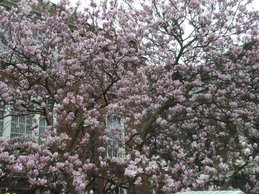Nasa's Phoenix probe, which is designed to look for water and evidence of life in the Martian arctic, is scheduled to touch down at 12.53am BST on Monday May 26. It was built using duplicate parts left over from two previous space missions, both of which were destroyed as they approached the Red Planet in 1999.

Touchdown will mark the end of a 10-month, 122m mile journey

Family photo: A comparison of the sizes of future and past Mars rovers. Sojourner touched down on the Red Planet in 1997, and the twin Mars Exploration Rovers landed in 2004. Mars Science Lab is scheduled to launch in 2009.

Phoenix bristles with scientific instruments. The dark "wings" are solar panels.

The rover was assembled at Lockheed Martin Space Systems in Denver, Colorado. Here, the craft's fan-like solar arrays have been spread open for testing.

Phoenix will collect samples of Martian soil using a scoop mounted on the end of its robotic arm.

A motorised rasp will be lowered through a small opening in the bottom of the scoop to gather shavings of frozen material.

The craft's wet chemistry laboratory will analyse the soil samples, for example looking for dissolved salts and measuring pH. The chemistry lab is just one tool in the Microscopy, Electrochemistry and Conductivity Analyzer, which incorporates microscopes to examine mineral grains and a probe to test the soil's thermal and electrical properties.

One of the four teacup-sized "beakers" in the wet chemistry lab. Each will be used only once, mixing water with a soil sample and then keeping it warm enough to remain liquid during the analysis. On the inner surface of the beaker are 26 sensors. Some will give information about the acidity or alkalinity of the soil sample. Others will gauge concentrations of ions.

The Thermal and Evolved-Gas Analyzer will study volatile substances in the soil samples. A "differential scanning calorimeter" (left) will measure the melting and boiling points of ingredients in the sample. The gases will then pass into a mass spectrometer (right), which will identify the chemicals.

The craft was built in a clean room under Nasa's strict "planetary protection" policy to avoid carrying organic materials to Mars. Engineers here work on the probe's "science deck". The robotic arm is visible in its stowed position at the top of the picture. The coloured and grey dots will be used to calibrate the spacecraft's Surface Stereoscopic Imager camera once the spacecraft has landed.

To test whether the probe's radar system would survive the landing intact, it was dropped inside a "drop weight" suspended from a helicopter at the Dryden Flight Research Center in Edwards, California.

Phoenix finally began its journey to Mars on August 4 2007 aboard a Delta II rocket launched from Cape Canaveral.

Send-off: The 10-month, 122m mile journey begins.

The planned landing site (D) is at a latitude equivalent to northern Alaska on Earth. Total vertical relief is shown on this colour-coded global projection, from about 28 kilometers (17 miles) at the top of the highest volcano (red) to the northern lowlands (blue).

Phoenix will enter the Martian atmosphere at 13,000mph, deploy a parachute and fire a series of rocket thrusters to bring its velocity down to 5mph just seconds before touchdown. "We will fire 26 pyrotechnic events in the last 14 minutes of the journey," says Barry Goldstein, project manager at Nasa's Jet Propulsion Laboratory in Pasadena. "Each of those has to work perfectly for the mission to come off as we planned."

The final moments before landing – described by Nasa as 'seven minutes of terror' – will be the most dramatic and nervously anticipated part of the mission. As Nasa scientist Ed Weiler put it: 'This is no trip to grandma's for the weekend.'

In the ensuing months Phoenix will use its robotic arm to dig down to what is expected to be an icy layer. It will analyse samples for evidence that the site once was – or may still be – a favorable habitat for microbial life. The lander's weather station will conduct the first study of Martian arctic weather from ground level. The vertical green line represents the laser beam that Phoenix will use to probe dust and clouds in the atmosphere.

Just 150 days after landing, Phoenix will begin to shut down operations as winter sets in. There is no sunlight in the far-northern latitudes on Mars during winter, so the solar panels will no longer charge the lander's batteries. Over the following months, it will be slowly buried beneath drifts of carbon dioxide frost.





















































